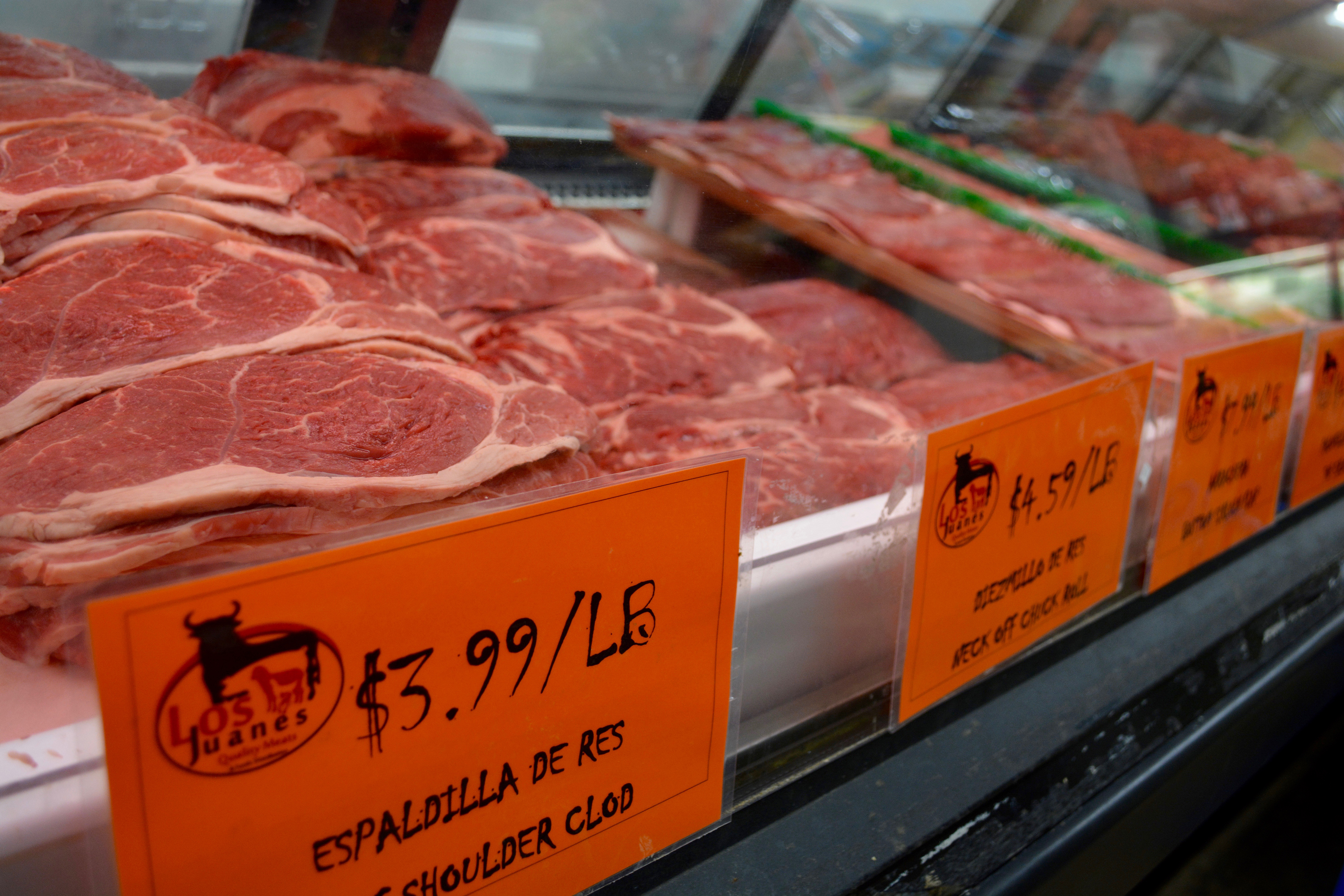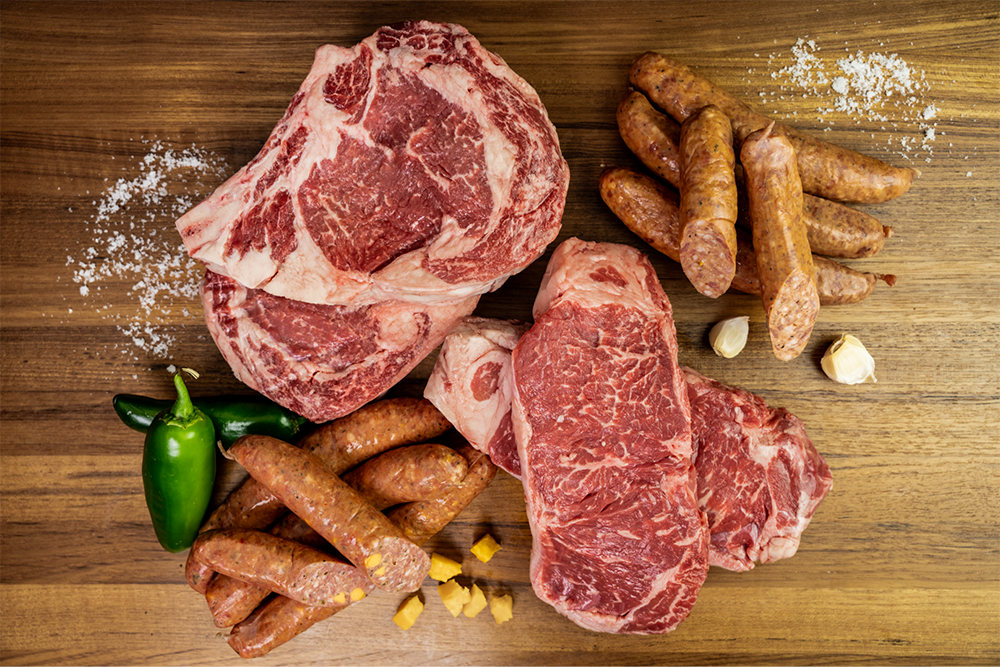Check Out the Regional Flavor at Bagley Farms Meat Market Edwardsville IL: Fresh and Delicious
Check Out the Regional Flavor at Bagley Farms Meat Market Edwardsville IL: Fresh and Delicious
Blog Article
Uncover the Art of the Butcher's Cut in a Modern Meat Market
In the ever-evolving landscape of modern meat markets, the butcher's cut has actually transcended its conventional roots, combining old-time workmanship with modern practices. bagley farms meat market edwardsville il. Today's butchers are not merely cpus of meat; they are knowledgeable craftsmens that emphasize sustainability and ethical sourcing. Their proficiency in picking and preparing cuts tailored to details cooking requirements offers an unrivaled eating experience. What really sets the modern butcher apart is their capability to build a deeper link in between customers and the origins of their meat. Just how do these masters equilibrium tradition with technology, and what effects does this have for the future of meat consumption?
Advancement of Butchery Techniques

The mid-20th century saw butchery methods even more fine-tuned by scientific understandings right into muscle mass biology and meat aging, boosting both tenderness and taste. Advancements like vacuum cleaner packaging and refrigeration extended item shelf-life, permitting butchers to diversify offerings and enhance quality assurance. This period also noted the increase of specific devices, such as band saws and meat slicers, which increased accuracy and efficiency in meat handling.
The 21st century has presented digital technology into the butchery realm. Digital systems now assist in monitoring animal provenance and optimizing cuts to meet specific client choices. In addition, a revival in artisanal butchery has emerged, mixing typical skills with modern knowledge to provide to consumers looking for moral and sustainable meat choices. This evolution underscores a dynamic interplay in between tradition and innovation, meeting contemporary needs while maintaining the craft's heritage.

Understanding Meat Cuts

Comprehending the ins and outs of meat cuts is necessary for both butchers and customers seeking quality and value. Each cut comes from a different part of the animal, passing on one-of-a-kind tastes, appearances, and cooking techniques. Mastery of these distinctions not just enhances cooking experiences however also takes full advantage of the energy of each carcass. For butchers, accurate cuts show skill and respect for the craft, ensuring minimal waste and optimal return.
The main groups of meat cuts include primitive, sub-primal, and retail cuts. Primitive cuts, such as the loin, rib, and chuck, are the huge areas at first divided from the carcass. Butchers then break these down additionally into sub-primal cuts, prior to lastly generating retail cuts offered to Extra resources consumers, like ribeye or tenderloin. Each phase requires mindful attention to physiological framework and muscle mass make-up.
Comprehending muscle mass composition is critical; muscular tissues utilized a lot more frequently by the animal often tend to be harder and are best suited for slow-moving food preparation approaches, while less-used muscle mass, like those found in the loin, are much more tender and suitable for grilling or roasting. Experience with these distinctions encourages consumers to make enlightened selections, enhancing their cooking undertakings.
Selecting Quality Meat
Choosing the appropriate meat entails more than just selecting a visually enticing item from the screen. The art of selecting top quality meat needs a critical eye and knowledge of particular characteristics that indicate freshness and quality.
Second of all, take into consideration the marbling, which describes the white streaks of fat within the muscle mass. Appropriate marbling is an essential indicator of inflammation and taste, Learn More Here as it melts during food preparation, improving the meat's juiciness. Keep in mind, higher marbling commonly correlates with premium top quality cuts, such as USDA Prime.
Appearance is an additional essential element; meat ought to really feel solid to the touch, not slimed or overly soft. Additionally, bear in mind the fragrance. Fresh meat must have a tidy, neutral scent, devoid of any type of sour or off-putting smells.
Pairing Cuts With Food Preparation Methods
Successfully combining cuts of meat with the suitable food preparation techniques is necessary for accomplishing optimal flavor and appearance. These approaches improve the meat's all-natural tastes and ensure a juicy coating.
Alternatively, harder cuts like brisket and chuck roast are rich in collagen, which breaks down right into jelly when prepared gradually. These cuts are suitable for braising or slow-moving roasting, allowing the meat to tenderize gradually and develop deep, intricate flavors. Cuts such as brief ribs and pork shoulder fare well with slow-cooking methods, where expanded cooking times transform their robust appearances right into succulent meals.
Lamb shanks and oxtail, which require long term cooking to soften, are best prospects for stewing or slow-moving simmering. These methods coax out abundant, hearty tastes while preserving wetness. By understanding the special features of each cut, chefs and home chefs my response alike can elevate their culinary creations, ensuring each recipe is both satisfying and unforgettable.
The Butcher's Role Today
Navigating the developing landscape of the modern meat market, the butcher's role today extends past mere prep work of cuts. Contemporary butchers are cooking craftsmens, instructors, and advocates for sustainable practices. They link the space between the ranch and the fork by making sure ethical sourcing, comprehending pet husbandry, and prioritizing openness in the supply chain. This change mirrors the expanding customer need for high quality over quantity, where provenance and pet welfare are critical.
In addition to crafting specific cuts, butchers currently engage straight with consumers, supplying cooking recommendations and customizing choices to fit specific demands and preferences. Their expertise in meat aging, marbling, and flavor accounts empowers consumers to make enlightened choices, boosting their cooking experiences. This customized solution exemplifies the butcher's advancing role as a trusted consultant in the kitchen area.
In addition, butchers are crucial in decreasing waste, using entire pets to produce varied products such as sausages and stocks - bagley farms meat market edwardsville il. This extensive technique not only values the animal yet also lines up with contemporary sustainability objectives. By doing this, the modern butcher personifies both practice and advancement, adjusting to an ever-changing market while preserving the virtuosity and integrity of their craft

Conclusion
The modern butcher's craft elaborately weaves typical techniques with contemporary innovations, highlighting sustainable practices and ethical sourcing. Mastery in understanding varied meat cuts and quality indicators encourages butchers to give educated referrals, straightening particular cuts with ideal cooking approaches. This knowledge not just raises cooking experiences however likewise strengthens the connection in between consumers and the origins of their food. By recognizing historical methods while welcoming contemporary demands, the butcher's function continues to be essential in today's advanced meat market.
Report this page